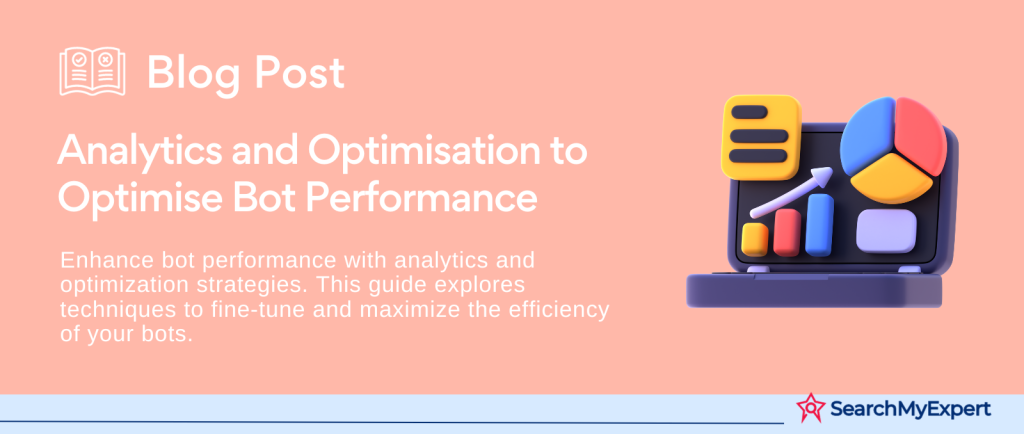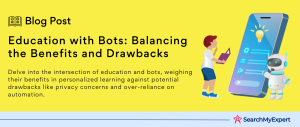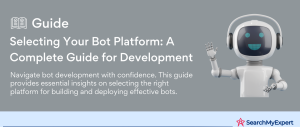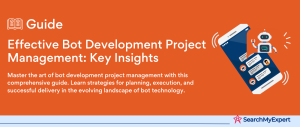Understanding Bots: An Overview of Their Functionality and Importance in the Digital World
Bots, an abbreviation of robots, have become an integral part of the digital landscape. In essence, these are software applications programmed to perform specific tasks automatically. Their functionality ranges from simple, repetitive tasks to complex, decision-making processes, making them a versatile tool in various sectors.
The Diversity of Bot Applications
The applications of bots are as diverse as the digital world itself. They are employed in numerous fields, each serving a unique purpose:
- Customer Service Bots:
These bots are designed to interact with customers, providing them with instant responses to inquiries and assistance with basic tasks, thus enhancing the customer experience. - Social Media Bots: Used extensively on platforms like Twitter and Facebook, these bots can automate tasks like posting content, engaging with followers, and gathering data about trends and user behavior.
- Data Scraping Bots:
They are employed to extract data from websites, which can be used for market research, lead generation, or competitive analysis. - E-commerce Bots:
These bots help in managing inventory, suggesting products to customers, and processing transactions, thereby streamlining the shopping experience.
The Critical Role of Analytics and Metrics in Bot Optimization
For bots to be effective, it’s crucial to analyze their performance and optimize them accordingly. This is where analytics and metrics come into play. They provide insights into how bots interact with users, the success rate of their tasks, and areas that require improvement. Key metrics often tracked include engagement rates, task completion rates, and user satisfaction scores.
Different Types of Bots and Their Key Functionalities
Bots can be categorized based on their functionality and the nature of the tasks they perform. Here are some prominent types:
- Chatbots: These are designed to simulate conversation with human users. They are widely used in customer service and for informational purposes.
- Transactional Bots:
These bots are focused on completing specific transactions, like booking tickets or ordering food. - Informational Bots: Used primarily for providing users with information, these bots can answer queries, provide news updates, and more.
- Entertainment Bots: Designed for leisure, these bots can play games, tell jokes, or even compose music.
Key Performance Indicators (KPIs) for Bots: Measuring Success Across Different Applications
Bots have become vital in automating various tasks across industries. To measure their effectiveness and align them with business goals, identifying and tracking Key Performance Indicators (KPIs) is essential. These KPIs vary depending on the type and purpose of the bot, whether it’s for customer service, sales, or content moderation.
KPIs for Different Types of Bots
Customer Service Bots
- User Satisfaction Score: Measures how satisfied users are with the bot’s responses and assistance.
- First Response Time: The time taken by the bot to respond to a user’s query initially.
- Resolution Rate:
Percentage of queries fully resolved by the bot without human intervention.
Sales Bots
- Conversion Rate:
Tracks the percentage of interactions that result in a sale. - Average Order Value:
Assesses the average value of a transaction processed by the bot. - Lead Generation Metrics:
Measures the bot’s effectiveness in generating and qualifying leads.
Content Moderation Bots
- Accuracy Rate:
Evaluates the bot’s ability to correctly identify and handle inappropriate content. - Content Handling Speed: Time taken to review and action on content.
- Volume of Content Processed: Amount of content the bot can handle within a specific period.
Common KPIs Across All Bot Types
- User Engagement:
Measures the level and depth of interaction users have with the bot. - Task Completion Rate:
Percentage of tasks the bot completes successfully without errors or human intervention. - Response Time:
Assesses how quickly the bot responds to user inputs. - Efficiency: Evaluates how the bot improves operational efficiency, such as reducing manual workload or speeding up processes.
- Sentiment Analysis: Analyzes the emotional tone in user interactions to gauge satisfaction and detect potential issues.
Impact of KPIs on Business Goals and ROI Measurement
The careful monitoring of these KPIs is crucial for aligning bot performance with business objectives. For instance, in customer service, high user satisfaction and quick resolution rates can lead to increased customer loyalty and retention. In sales, a high conversion rate and efficient lead generation by bots can directly contribute to revenue growth.
Furthermore, understanding these metrics helps in calculating the Return on Investment (ROI) of bots. By analyzing the cost savings from manual labor reduction, increased sales, or improved customer satisfaction, businesses can assess whether their bot strategies are yielding the desired financial returns.
Optimizing Bot Performance: Essential Tools and Techniques for Effective Data Collection and Monitoring
For bots to be effective and continuously improve, it’s crucial to have robust systems in place for data collection and monitoring. This step focuses on exploring the tools and platforms used for gathering data from bot interactions, analyzing both real-time and historical data, and the significance of dashboards and visualizations in presenting this data.
Tools and Platforms for Collecting Bot Interaction Data
- Chat Logs: Services like Intercom or Zendesk capture detailed records of bot-user interactions, providing insights into user queries and bot responses.
- User Activity Tracking:
Tools like Google Analytics or Mixpanel can track user behavior and engagement levels with the bot. - System Logs:
Platforms like Splunk or Loggly can collect and analyze system logs to identify technical issues or bottlenecks in bot performance.
These tools provide a wealth of data, from the specific questions users are asking to how they navigate through a bot conversation. This data is invaluable for understanding bot performance and user needs.
Real-time vs. Historical Data Monitoring and Analysis
- Real-time Monitoring:
This involves observing bot interactions as they happen, allowing for immediate responses to any issues or anomalies. Tools like Datadog or New Relic offer real-time monitoring capabilities, ensuring that bots function optimally at all times. - Historical Data Analysis: This involves looking at past bot interactions to identify trends, patterns, and areas for improvement. Tools like Tableau or Microsoft Power BI can analyze historical data, providing strategic insights over time.
Real-time monitoring is crucial for immediate problem-solving, while historical data analysis is key for long-term strategy and improvements.
The Role of Dashboards and Visualizations in Data Presentation
- Custom Dashboards:
Platforms like Google Data Studio or Klipfolio allow the creation of custom dashboards that can display key metrics and KPIs relevant to bot performance. - Data Visualizations: Incorporating charts, graphs, and heat maps to represent data makes it easier to understand and act upon. Tools like D3.js provide extensive options for data visualization.
Dashboards and visualizations transform raw data into actionable insights. They make it easier for stakeholders to understand the bot’s performance and make informed decisions.
Advanced Insights: Analyzing User Behavior and Interactions with Bots
To further enhance the performance of bots and ensure they meet user needs effectively, it’s crucial to analyze user behavior and interactions deeply. This step involves identifying key metrics related to user engagement and satisfaction, scrutinizing user journeys to pinpoint potential issues, and employing techniques like A/B testing and personalization.
Metrics for Measuring User Engagement, Satisfaction, and Sentiment
- Engagement Metrics:
These include the number of interactions per session, session duration, and frequency of user-bot interactions. Tools like Google Analytics can provide this data. - Satisfaction Metrics: User satisfaction can be gauged through direct feedback, like ratings or surveys post-interaction. Net Promoter Score (NPS) is a commonly used metric.
- Sentiment Analysis:
This involves analyzing the tone and emotions in user messages using natural language processing tools. It helps in understanding user sentiment towards the bot.
Analyzing User Journeys and Identifying Pain Points
- User Journey Mapping: By mapping out the typical paths users take when interacting with a bot, businesses can identify common drop-off points or areas where users seem to struggle.
- Bottleneck Identification:
Analyzing chat logs and interaction patterns can help pinpoint specific stages in the conversation where users encounter difficulties or confusion.
A/B Testing and Personalization Techniques
- A/B Testing:
This involves creating two versions of a bot’s interaction or conversation flow and testing them with different user segments to see which performs better. It’s an effective way to optimize conversation paths and responses. - Personalization Based on User Data:
By analyzing past interactions and user data, bots can be programmed to deliver more personalized experiences, such as recommending products based on past purchases or tailoring the conversation style to the user’s preferences.
Evaluating Bot Efficacy: Key Metrics and Strategies for Enhanced Performance and Efficiency
For bots to be a valuable asset in any organization, their performance and efficiency must be rigorously measured and continuously improved. This step delves into crucial metrics for assessing bot performance, identifying automation opportunities, and understanding the impact of bots on operational costs and productivity.
Critical Metrics for Assessing Bot Performance
- Average Handling Time (AHT): This metric measures the average time taken by a bot to handle an interaction or resolve a query. Lower AHT indicates higher efficiency.
- Resolution Rate:
The percentage of issues or tasks that the bot resolves without escalating to a human agent. A higher resolution rate signifies better performance. - Task Completion Rate:
This tracks the percentage of tasks that the bot completes successfully. It’s a direct indicator of the bot’s efficacy in fulfilling its intended purpose.
Opportunities for Automation and Efficiency Enhancement
- Identifying Repetitive Tasks: Analyze interaction data to find repetitive queries or tasks that can be automated, thus freeing up human agents for more complex issues.
- Optimizing Bot Responses: Continuously refine the bot’s responses and conversation flows based on user feedback and interaction data to improve efficiency.
- Integrating with Other Systems:
Enhance the bot’s functionality by integrating it with CRM systems, databases, or other tools to provide more comprehensive and efficient service.
Impact of Bot Deployment on Customer Service Costs and Productivity
- Cost Reduction:
Evaluate how bots have reduced the need for human intervention, leading to savings in labor costs and resources. - Productivity Improvement:
Assess the impact of bots on overall productivity, such as handling more queries in less time and reducing the workload on human agents. - Quality of Service:
Consider the bot’s impact on the quality of customer service, such as availability 24/7 and consistent responses.
Harnessing Advanced Analytics: Leveraging AI and Machine Learning in Bot Interactions
In the realm of bot technology, the utilization of advanced analytics, particularly through AI and machine learning, has opened up new avenues for deepening our understanding of user interactions. This step explores how these technologies can be used for more insightful analysis, predictive modeling, and ethical considerations in bot analytics.
Machine Learning and AI in Analyzing Bot Interactions
- Deep Learning for Pattern Recognition:
Utilize deep learning algorithms to analyze vast amounts of interaction data, recognizing complex patterns and user preferences. - Natural Language Processing (NLP): Employ advanced NLP techniques to better understand user queries and responses, enhancing the bot’s ability to interpret and react to nuanced language.
- Predictive Analytics:
Machine learning models can predict future user behaviors based on historical data, allowing bots to proactively address user needs or queries.
Predictive Modeling for Enhanced Bot Responses
- Behavioral Trend Analysis:
Analyze user interaction trends to anticipate common queries or issues, enabling the bot to provide more relevant and timely responses. - Customization and Personalization:
Use predictive models to tailor the bot’s responses to individual user preferences, improving user engagement and satisfaction. - Feedback Loop Integration:
Incorporate user feedback into the machine learning model to continually refine and improve the bot’s interactions and decision-making processes.
Ethical Considerations and Data Privacy in Bot Analytics
- User Consent and Transparency:
Ensure that users are aware of and consent to data collection and analysis. Be transparent about how their data is being used and for what purpose. - Data Security and Protection:
Implement robust security measures to protect user data from unauthorized access or breaches. - Bias and Fairness:
Be vigilant about potential biases in AI models that could lead to unfair or discriminatory responses. Regularly audit and update models to ensure fairness and inclusivity.
Strategic Enhancement: Utilizing Insights for Bot Optimization and Expansion
The final step in our comprehensive guide focuses on how to leverage the insights gathered from analytics for the continuous improvement and growth of bots. This involves translating data insights into tangible enhancements, iterating bot algorithms based on performance metrics, and understanding the role of analytics in scaling bot deployments.
Translating Data Insights into Actionable Improvements
- User Experience Enhancement: Utilize feedback and interaction data to refine the bot’s conversational flows, making them more intuitive and user-friendly.
- Functionality Upgrades:
Identify areas where the bot may be lacking and implement new features or integrations to expand its capabilities. - Customization and Personalization:
Tailor the bot’s responses and recommendations based on individual user preferences and behaviors identified through analytics.
Continuous Iteration and Algorithm Updates Based on Performance Data
- Adaptive Learning: Implement machine learning algorithms that enable the bot to learn from interactions and improve over time.
- Performance Monitoring:
Regularly review key performance indicators to identify areas for improvement. - A/B Testing:
Continuously test different versions of bot interactions to determine which approaches yield the best results and user satisfaction.
Scaling and Expanding Bot Deployments Through Analytics
- Identifying Opportunities for Scale: Use analytics to identify successful areas of the bot’s application and potential new use cases for expansion.
- Resource Allocation:
Analyze performance data to make informed decisions about where to invest resources for further development and scaling. - Market Trend Analysis:
Stay informed about emerging trends and advancements in bot technology and user expectations to keep the bot relevant and competitive.
Conclusion:
In the ever-evolving landscape of digital technology, bots have emerged as crucial tools for automating interactions and processes across various sectors. This comprehensive guide has walked you through the essential aspects of bot analytics and optimization, from understanding basic bot functionalities to leveraging advanced analytics for strategic enhancements. By identifying key performance indicators, utilizing data collection tools, analyzing user behavior, and continuously iterating bot functionalities, businesses can not only improve the efficiency of their bots but also significantly enhance user satisfaction and engagement.
Moreover, the integration of AI and machine learning offers a pathway to more intuitive and personalized bot interactions, ensuring that bots remain not only functional but also adaptive to the changing needs and expectations of users. Ethical considerations and data privacy remain paramount in this journey, underscoring the importance of responsible and transparent data use.
Craft intelligent digital assistants with our Bot Service Company.
Table of Contents
Toggle






